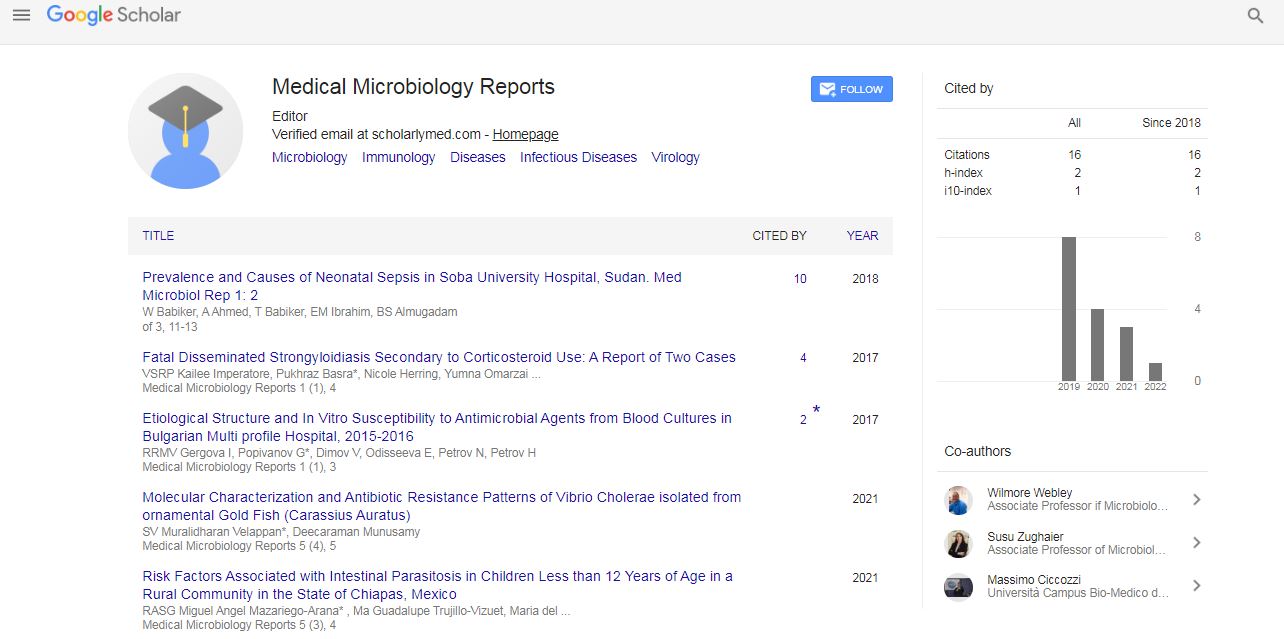Quorum sensing as a target for antivirulence therapy
Livia Leoni
University Roma Tre, Italy
: Med Microbiol Rep
Abstract
Antibiotic resistance is a serious public health concern at the global level. Available antibiotics have saved millions of lives, but they are progressively losing their activity on many bacterial pathogens, and very few new antibiotics are being developed by the pharmaceutical industry. In the last decades, progress in understanding the pathogenic process of bacterial infections has led researchers to focus on bacterial virulence factors as potential targets for “antivirulence” drugs, i.e. compounds which inhibit the ability of bacteria to cause damage to the host, as opposed to inhibition of bacterial growth which is typical of antibiotics. Molecular communication (quorum sensing; QS) mechanisms are used by many bacteria to co-†ordinate virulence at the population level and are undoubtedly the most studied targets for anti-†virulence drugs. Hundreds of virulence inhibitors have been examined to date in vitro and/or in animal models, but only few entered into clinical trials and none were approved, thus hindering the clinical validation of the antivirulence therapy. To breathe new life into antivirulence research and speed up its transfer to the clinic, antivirulence activities have also been searched in drugs already approved for different therapeutic purposes in humans. If effective, these drugs could be repositioned for antivirulence therapy and have an easier and faster transfer to the clinic. While this approach undoubtedly holds promise for boosting antivirulence drug research, some important issues remain to be addressed in order to make antivirulence drugs viable alternatives to traditional antibacterials (1, 2). Our research group is involved in the development of anti-†virulence drugs targeting Pseudomonas aeruginosa QS via drug repurposing since many years. The antihelmintic drug niclosamide strongly decrease P. aeruginosa virulence in vitro and in vivo and has been reformulated for aerosol administration for the treatment of P. aeruginosa chronic lung infections (3, 4). This drug constitutes a paradigmatic example of the research in this field.
Biography
E-mail: livia.leoni@uniroma3.it
 Spanish
Spanish  Chinese
Chinese  Russian
Russian  German
German  French
French  Japanese
Japanese  Portuguese
Portuguese  Hindi
Hindi 
